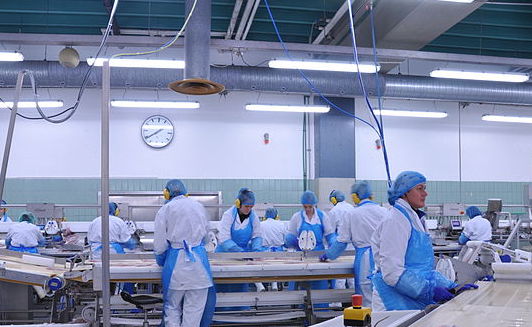Our Assembly-Line Future?
By Stuart A. Newman,
Counterpunch
| 07. 31. 2018
Human civilization has taken an important turn with the publication of a new report by the Nuffield Council, the semi-official bioethics agency of the United Kingdom. The document, two years in preparation, gives the go-ahead to genetically engineer human beings at the embryonic stages of development. The report stated: “There is potential for heritable genome editing interventions to be used at some point in the future in assisted human reproduction, as a means for people to secure certain characteristics in their children.” If history is a guide, the U.S. will not lag far behind the U.K. in following this dangerous path.
The U.K. pioneered human genetic engineering by approving, earlier this year, a technique to construct embryos using parts of the eggs of two different women, along with a man’s sperm, to create “three-person embryos.” Though deceptively promoted as “mitochondrial transfer,” the procedure really involves transferring around 20 thousand genes from a woman with impaired mitochondria into another woman’s egg. The accurate “three-person” designation was only widely used in the scientific literature after the procedure became legal. Similar misrepresentations of...
Related Articles
By Jenny Lange, BioNews | 12.01.2025
A UK toddler with a rare genetic condition was the first person to receive a new gene therapy that appears to halt disease progression.
Oliver, now three years old, has Hunter syndrome, an inherited genetic disorder that leads to physical...
By Grace Won, KQED [with CGS' Katie Hasson] | 12.02.2025
In the U.S., it’s illegal to edit genes in human embryos with the intention of creating a genetically engineered baby. But according to the Wall Street Journal, Bay Area startups are focused on just that. It wouldn’t be the first...
By Pam Belluck and Carl Zimmer, The New York Times | 11.19.2025
Gene-editing therapies offer great hope for treating rare diseases, but they face big hurdles: the tremendous time and resources involved in devising a treatment that might only apply to a small number of patients.
A study published on Wednesday...
Several recent Biopolitical Times posts (1, 2, 3, 4) have called attention to the alarmingly rapid commercialization of “designer baby” technologies: polygenic embryo screening (especially its use to purportedly screen for traits like intelligence), in vitro gametogenesis (lab-made eggs and sperm), and heritable genome editing (also termed embryo editing or reproductive gene editing). Those three, together with artificial wombs, have been dubbed the “Gattaca stack” by Brian Armstrong, CEO of the cryptocurrency company...




